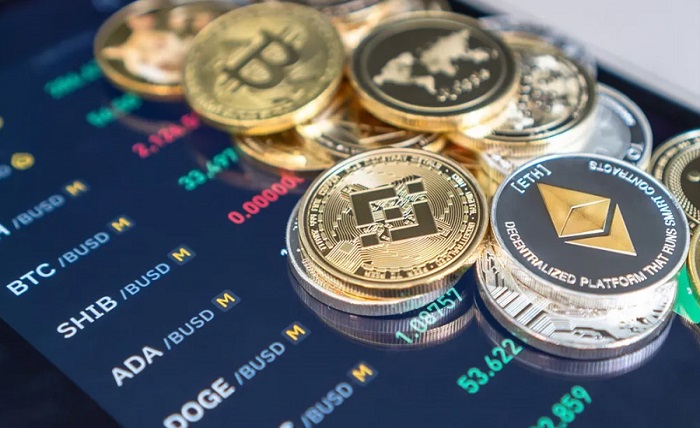These days, cryptocurrencies are a trendy issue, with Bitcoin leading the pack as the most well-known digital asset. However, as the market expands, so do the number of ICOs and alternative currencies. Don’t worry if you don’t understand these terminology; you’re not the only one. Many still struggle to understand what these things are and how they vary from one another.
Simply put, altcoins are different cryptocurrencies from bitcoin, each with its own special characteristics and applications. Initial coin offerings, or ICOs, are a type of financing that lets businesses raise cash by releasing their own cryptocurrency. While ICOs and altcoins have both been making headlines in the cryptocurrency industry, there are some key distinctions that prospective investors should be aware of.
We’ll examine the variations and parallels between cryptocurrencies and US ICOs in this article. We’ll also discuss the benefits and drawbacks of investing in these assets and offer advice on how to conduct a thorough assessment. By the time you’ve finished reading this article, you’ll know more about these crucial ideas and be better prepared to make wise financial choices. So let’s get started and learn more about the world of altcoins and ICOs!
Definition and traits of cryptocurrencies
Alternative cryptocurrencies to Bitcoin, or “altcoins,” are gaining popularity in the cryptocurrency community. They distinguish themselves from Bitcoin and other digital assets by providing distinctive features and use cases. Altcoins are a key component of portfolio diversification for investors and offer chances for large profits.
There are many different kinds of altcoins, such as utility tokens, privacy coins, and stablecoins. Users’ anonymity and privacy are prioritised by privacy coins like Monero and Zcash. The goal of stablecoins like Tether and USD Coin is to maintain a stable value by pegged to a conventional asset or currency. On a blockchain network, decentralised applications are accessed and powered by utility tokens like Ethereum’s Ether.
Altcoin investing can have drawbacks, though, like more volatility and the potential for fraud or frauds. To reduce risks and increase possible rewards, it is crucial for investors to do their homework before making an altcoin investment.
ICO Definition and Methodology
Initial coin offers (ICOs) are a means of generating money by releasing a company’s own cryptocurrency. As a result, businesses can avoid using conventional funding channels, and investors can back cutting-edge ideas with a chance of earning a profit.
A whitepaper detailing the project and its objectives is often the first step in an ICO, which is then followed by the sale of tokens to investors in return for cryptocurrencies or fiat money. Investors must exercise caution due to the possible hazards because the regulatory framework surrounding ICOs in the USA is complex.
Lack of regulation, fraud, and the potential for a project’s failure to deliver on its claims are some of the dangers associated with investing in ICOs. Investors must conduct extensive due diligence on the ICO’s project and team and be alert to any potential red flags. Despite the dangers, ICOs are still a well-liked investment choice in the cryptocurrency industry, and cautious investors can profit greatly.
Comparison of ICOs vs alternative currencies
In the world of cryptocurrencies, both ICOs and altcoins are well-liked investment possibilities, but they have some significant differences. While ICOs are fundraising efforts that let businesses issue their own money, altcoins are alternatives to bitcoin that each have their own characteristics and use cases.
While ICOs entail selling tokens to investors in exchange for cryptocurrency or fiat money, the main funding model for altcoins is through mining or direct purchase on an exchange. While ICOs are designed to raise money for a specific project, altcoins are frequently used for payments or as a store of value.
These variations have a big influence on investors because investing in ICOs can be more high-risk but might potentially result in bigger profits, whilst investing in altcoins is typically less risky but may give lesser returns. Investors should carefully analyse the advantages and disadvantages of each choice, as well as their investing objectives and risk tolerance.
Comparison of ICOs vs alternative currencies
In the realm of cryptocurrencies, altcoins and ICOs have a few things in common despite their differences. Both cryptocurrencies and ICOs are cutting-edge methods of storing and transferring wealth, and they are both a part of the larger ecosystem of digital assets and blockchain technology.
When thinking about investing in cryptocurrencies or initial coin offerings (ICOs), investors must use a similar approach to risk management and due research. It’s crucial to carefully explore the risks associated with an altcoin or ICO, assess its potential for growth and success, and conduct extensive research on the project and team behind it.
Additionally, although they carry a higher level of risk than conventional investments, altcoins and ICOs both give investors the chance to make big profits. Making selections based on one’s investing objectives and risk tolerance requires understanding the risks and potential benefits, just like with any other investment.
Purchasing Altcoins and ICOs
Altcoin and ICO investing can be a high-risk, high-reward venture. Investors should take into account elements including the project’s whitepaper, staff, and community involvement while evaluating these assets. Tools like CoinMarketCap and ICOBench can offer insightful data and useful information about potential investments.
Investors should exercise due diligence and fully investigate potential investments before committing any money to reduce risks. Diversifying one’s portfolio is essential for spreading risk and preventing overexposure to any one item.
Other tactics include establishing precise investment objectives and a risk management strategy, keeping abreast of market developments and news, and steering clear of con games or dubious endeavours. Investors may navigate the cryptocurrency and ICO marketplaces and possibly earn substantial profits by being cautious and knowledgeable.
Conclusion
Anyone interested in making cryptocurrency investments has to be aware of the distinctions and similarities between ICOs and alternative currencies. While ICOs provide businesses a distinctive approach to raise money using cryptocurrencies, altcoins give investors options outside of Bitcoin.
Investors must carefully weigh the potential benefits and hazards of investing in ICOs and alternative currencies. They should do their homework on the project team and community involvement, diversify their holdings, and keep up with industry news and developments.
Investors should be informed about changing regulatory frameworks surrounding ICOs in the USA to prevent any legal repercussions. Even while altcoins and ICOs have the potential to yield huge profits, they carry more risk than conventional investments. Investors should therefore consider the risks and potential benefits and make wise financial decisions.
It is crucial to keep up with the most recent advancements and developing trends in the bitcoin industry given the quickly changing nature of the financial landscape today. Investors can then take advantage of the exciting chances provided by cryptocurrencies and ICOs in the USA and potentially gain from their well-informed judgements.
Read More You May Like:














Post Comment